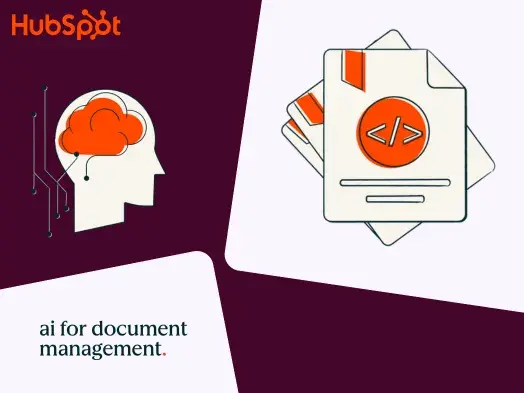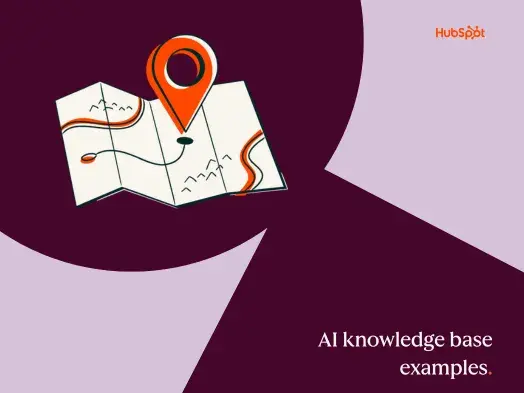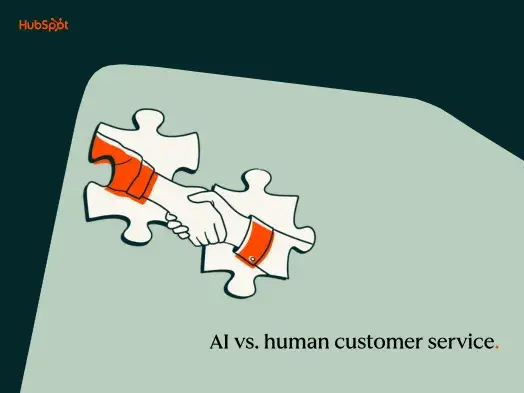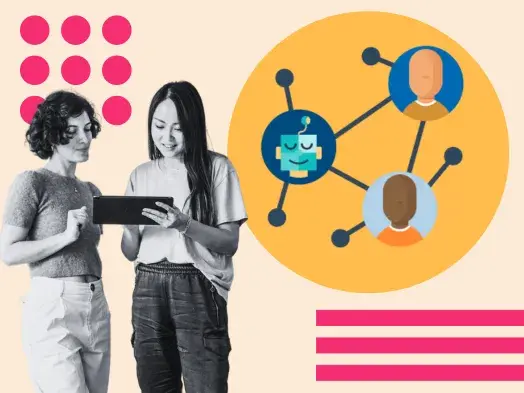In this article, we‘ll explore how cutting-edge teams are using AI. Whether you’re overwhelmed by data or just starting to explore AI, you're about to discover how artificial intelligence can be your compass in customer success.
Table of Contents
- What Are AI Customer Insights?
- How AI Impacts Customer Insights in 2024
- How to Use AI for Customer Insights
What Are AI Customer Insights?
AI customer insights are the goldmine of user understanding that machine learning algorithms unearth from your data. They go beyond traditional analytics and highlight patterns and behaviors humans might miss.
These insights can predict a customer’s wants before they even realize it. They bridge the gap between guessing and knowing why your churn rate spiked last quarter.
AI customer insights allow businesses to move from reactive to proactive strategies, predicting customer needs before they arise.
AI connects the dots, revealing insights like how users who engage with your onboarding emails are 3x more likely to become power users or how customers using feature X are 70% less likely to churn.
The real advantage? AI insights are actionable and often real-time, offering guidance not just on what happened but on what to do next. Whether it's tweaking your UI or personalizing outreach, AI insights guide decisions that tangibly improve your product and user experience.
How AI Impacts Customer Insights in 2024
While 2023 was the year AI became mainstream, 2024’s the year where people start figuring out how to squeeze the most value out of it.
At the same time, I think customer care leaders are in the trickiest position yet. Sure, they now have unlimited technologies at their disposal to improve their customer service operation. But if (and when) these AI technologies don’t give them the results they need amid rising customer expectations, there’s a need to step back and reevaluate entire work processes.
The promise of AI-driven customer insights is tantalizing, but the reality is proving to be a mixed bag. On one hand, AI is revolutionizing how businesses understand their customers. McKinsey reports that over 80% of companies are already investing in or planning to invest in generative AI for customer care. The potential is clear: deeper insights, faster response times, and more personalized experiences.
But here's the rub: Only 8% of North American companies report better-than-expected satisfaction with their customer performance.
Why the disconnect?
AI implementation isn't a plug-and-play solution. Companies face technical barriers, data security concerns, and the complex task of integrating new tools into existing workflows.
Despite these hurdles, early successes — like a European bank improving chatbot efficiency by 20% — show that persistence pays off.
Meanwhile, customer service pros are caught in the middle. With 79% viewing AI as critical to their strategy, professionals know that mastering AI is key to staying competitive — but they must balance innovation with the human touch customers still crave.
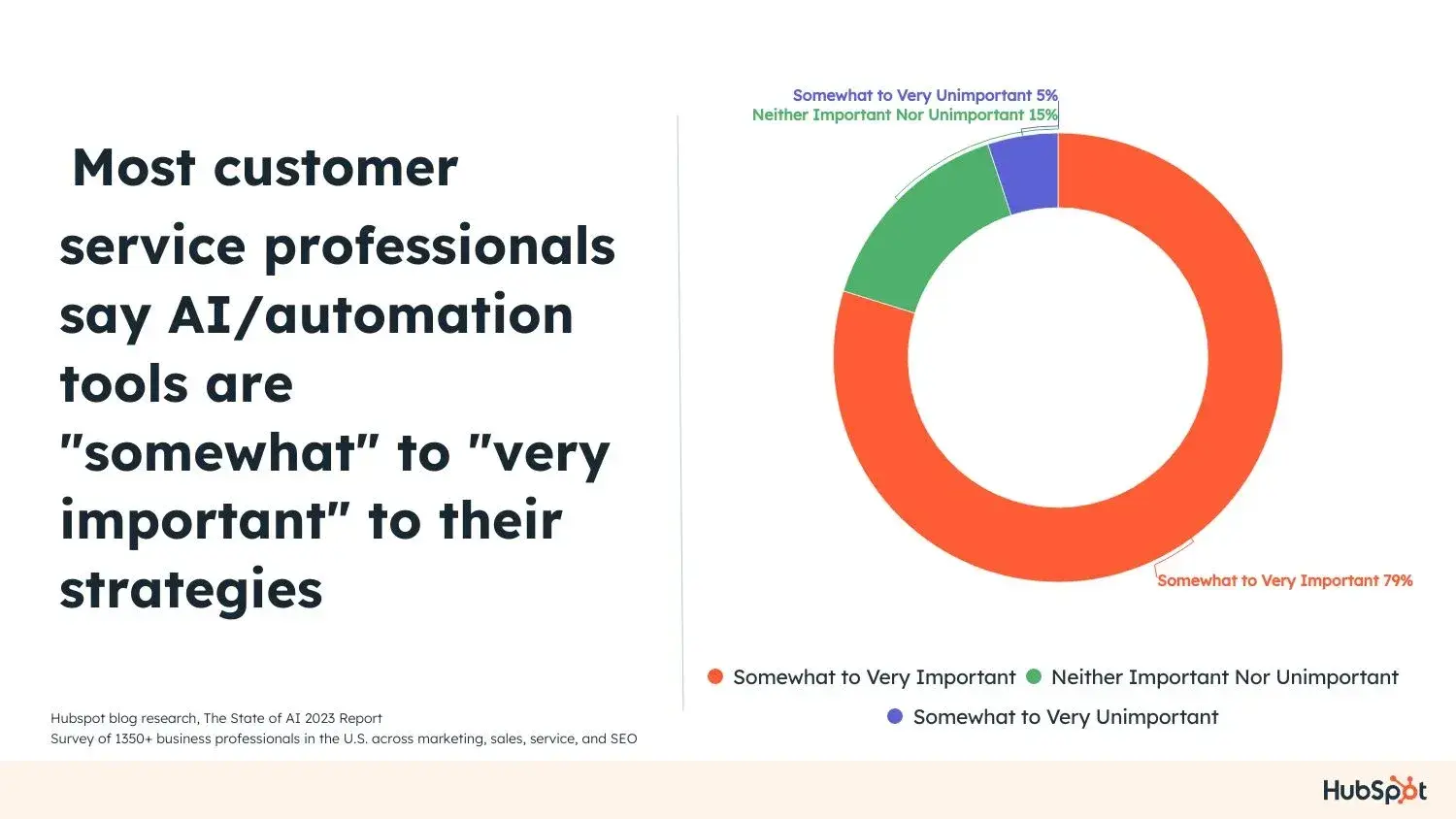
The truth is, we‘re in uncharted territory. While AI promises to parse through mountains of data, extracting golden nuggets of customer insights, it’s not without its pitfalls.
Yet, the potential benefits are too significant to ignore. Marketers are feeling the pressure, with over half admitting they fear becoming irrelevant if they don't master AI.
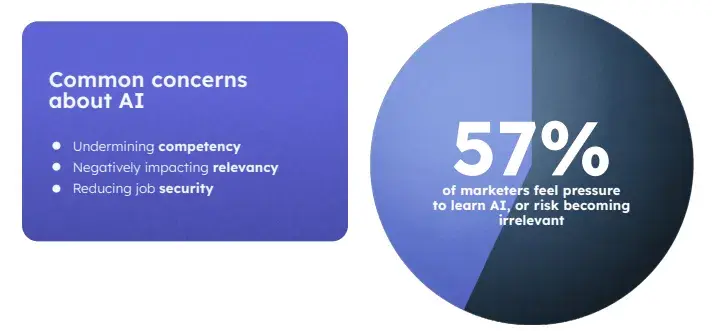
As we forge ahead in 2024, the message is clear: AI is not just a tool — it's a transformation. The companies that will thrive are those that can harness its power while navigating the complex human elements of this technological revolution.
How to Use AI for Customer Insights
Since adopting AI in 2021, I've used it to uncover emotional drivers within customer segments which helps me refine my LinkedIn content strategy with data-backed precision.
Here’s how some companies use AI for customer insights. Let’s start with my own use case.
Understand the Emotional Drivers of Each Customer Segment
AI-powered customer segmentation goes beyond traditional demographic or behavioral groupings. It uses machine learning algorithms to analyze large amounts of data, identifying subtle patterns and correlations that humans might miss. This gives me detailed, useful groups of customers I can actually work with.
Precise segmentation allows me to tailor my product, marketing, and customer experience with laser focus. It's the difference between shouting into the void and having a personalized conversation with each customer group.
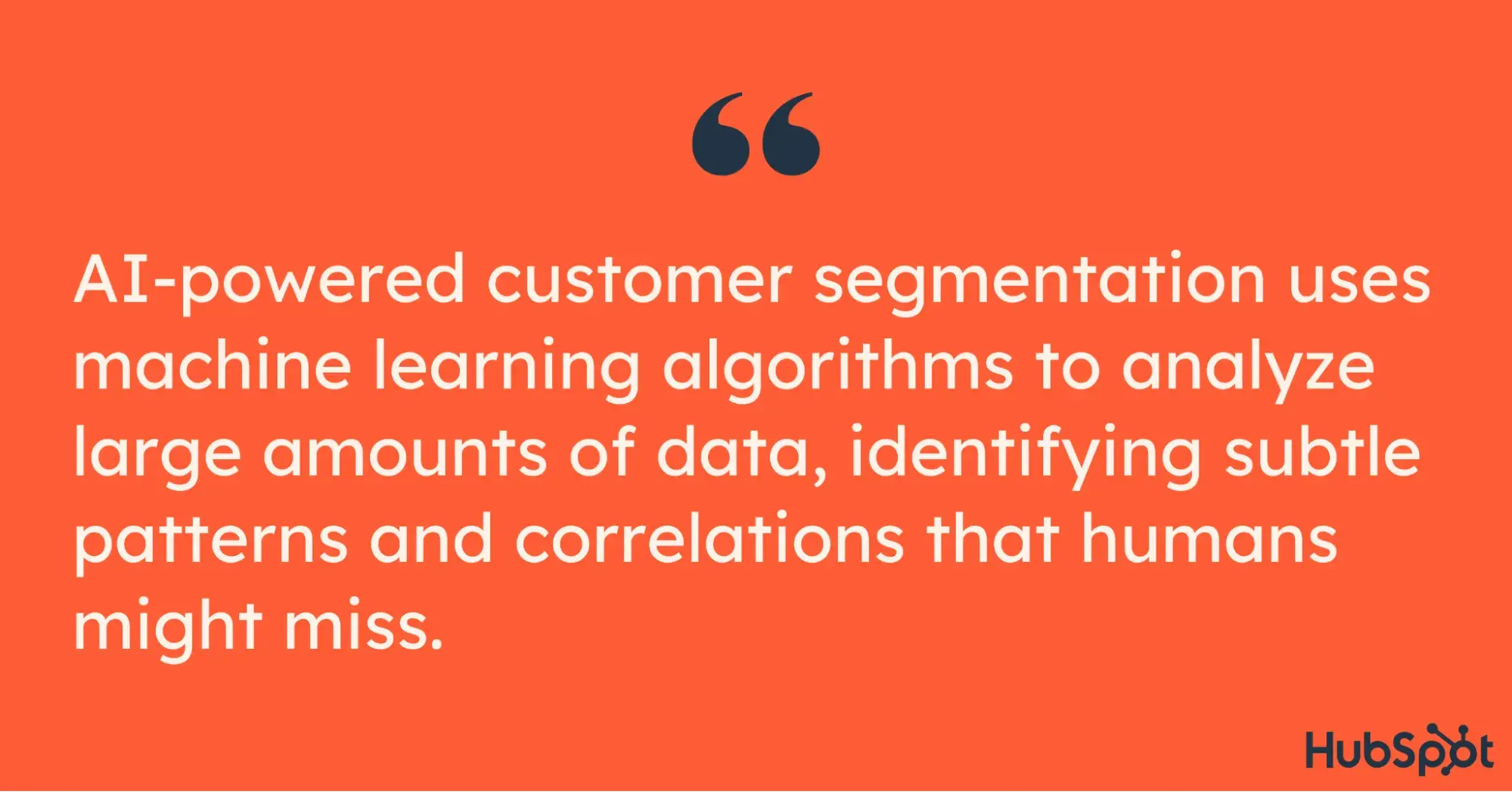
As a freelance writer for B2B SaaS companies, I've used my conversations with different clients to create three main segments: content managers expanding operations, startup founders needing strategy, and freelancers seeking guidance.
I've then used ChatGPT to uncover deeper emotional drivers for each segment which helps me create more targeted LinkedIn content. I use the Fear, Frustrations, Goals, and Aspirations framework with AI to figure out what my audience is thinking about.
Here’s an example of the prompt:
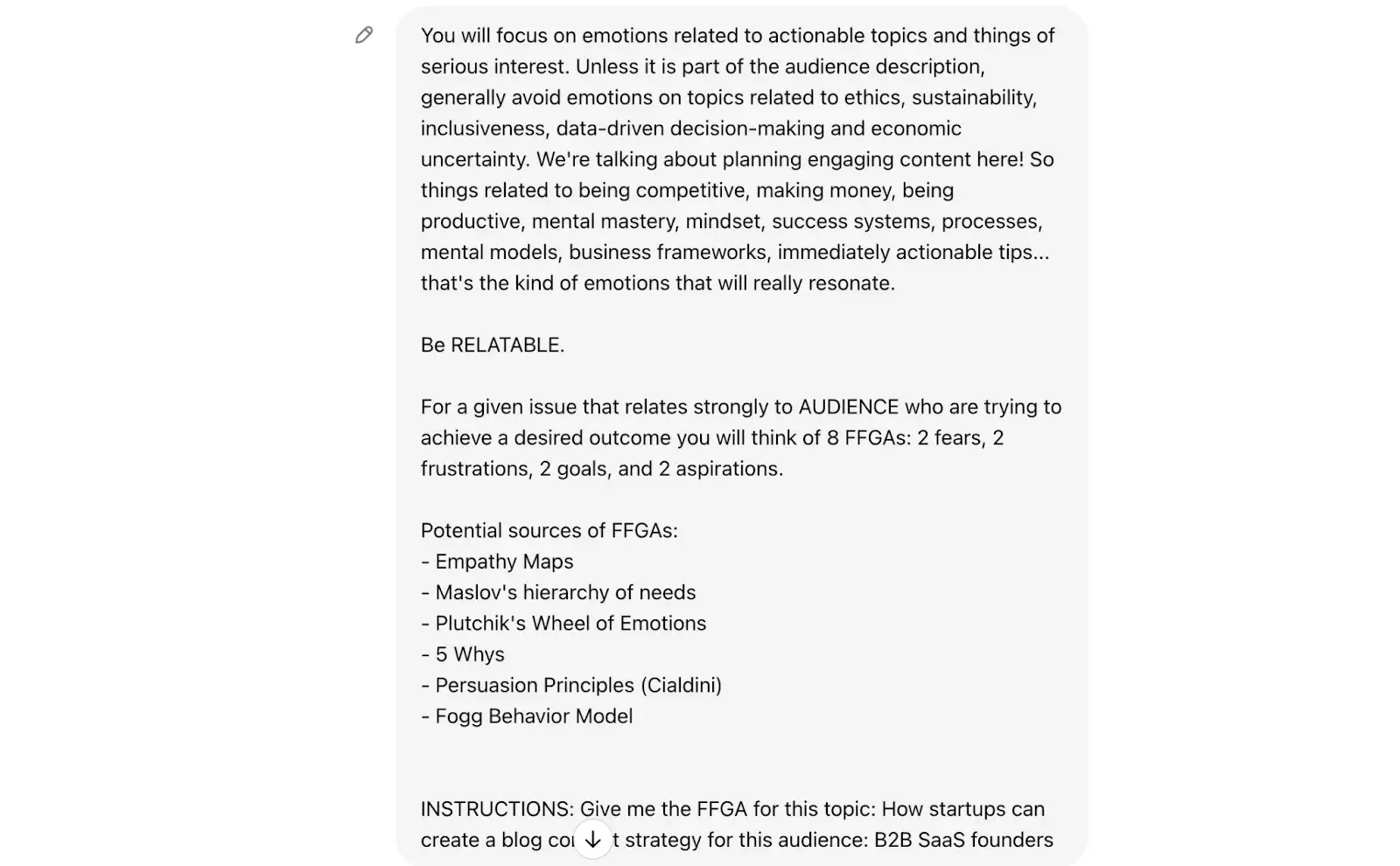
And the output I get:
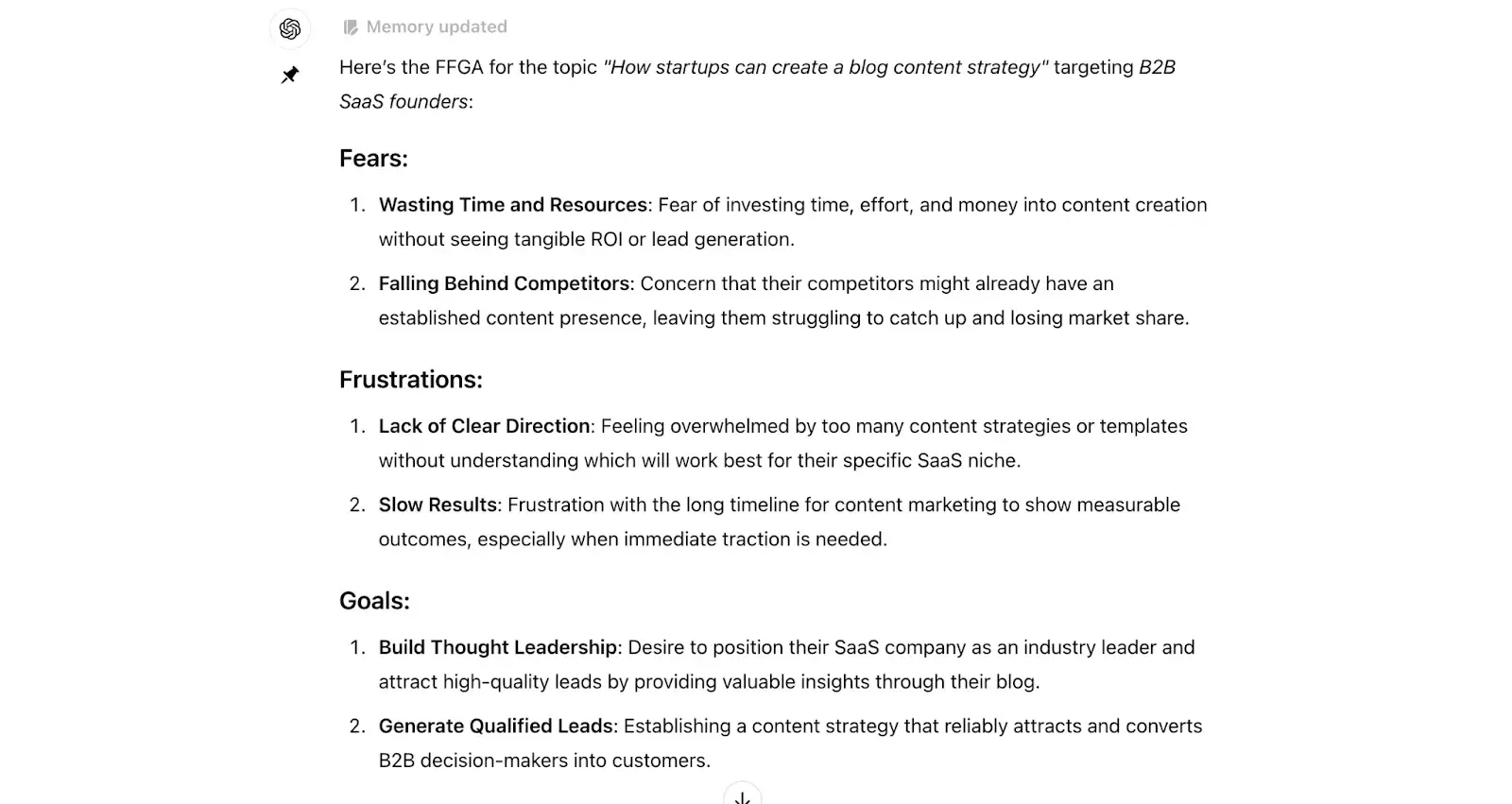
While this is a basic example, you can learn how to use ChatGPT to identify micro-segments and even predict which customers are likely to churn or upgrade based on subtle behavior patterns.
To implement AI segmentation, I recommend you collect user behavior, engagement metrics, and feedback from multiple touchpoints.
Decide what you want from better customer grouping. More sales? Less churn?
Start with what you know about your customers — such as past behavior, engagement metrics, or survey feedback — then let the AI refine and reveal new insights.
Lastly, AI segmentation isn‘t a one-and-done process. Regularly update your models with new data to keep segments relevant. Even the best customer segmentation is pointless if you don’t use what it tells you.
Use NLP for Customer Feedback
AI-powered natural language processing (NLP) can quickly go through tons of feedback. It’s great for product teams swamped with customer feedback, helping them focus on what to improve and spot issues early.
Product teams can also discover pain points that usage data alone might not reveal and prioritize product improvements based on customer sentiment.
I suggest implementing NLP for customer feedback analysis by:
- Aggregating feedback from multiple sources (support tickets, app reviews, social media, surveys).
- Using an NLP tool or service to process and analyze the data.
- Setting up alerts for emerging trends or issues.
- Integrating insights into your product development process.
Heydar Naghiyev, head of demand generation at security platform Censornet, shares a real-world example:
“We implemented an AI system to analyze feedback from support tickets, app reviews, and social media. About two months in, this system flagged an issue with our task dependency feature that we thought was solid based on usage numbers.”
The AI detected numerous frustrated comments buried in longer feedback posts, revealing that users were using the feature out of necessity, not preference.
By revamping the feature based on these AI-surfaced insights, Censornet saw a 30% increase in feature usage and higher customer satisfaction scores.
Pro tip: Use NLP insights not only to enhance product development but also to fine-tune your customer support approach and create marketing messages that directly address customer pain points.
Decode User Behavior Through AI-Powered Website Analytics
AI tools can spot detailed patterns in user behavior on websites, finding insights that traditional methods might miss. This tech helps teams understand not just what users do, but why. That leads to smarter decisions about site design and content.
Edward Tian, CEO of AI Detector GPTZero, shares how his team uses AI to gain deeper insights into user behavior:
“AI helps us learn about our audience's habits. It helps us better understand navigation patterns on our website, for example. This allows us to learn what pages people are entering first, where they go to from those pages, how long they stay on certain pages, and where they are most likely to exit out of our site.”
AI provides a full view of the user journey. It reveals pain points, preferences, and opportunities for optimization that might otherwise go unnoticed.
Pro tip: Focus on key metrics like entry points, user flow, time on page, and exit rates. Use these insights to tweak your site layout, improve where content goes, and make the user experience better.
Improve Customer Experience With Predictive Analytics
Imagine knowing what your customers want before they do.
Predictive analytics looks at past data to guess future trends. AI sifts through mountains of customer data — from social media comments to transaction histories — to spot trends, helping you send personalized offers or solve issues faster.
Knowing these trends helps you stay ahead of competitors and ensures your products stay relevant.
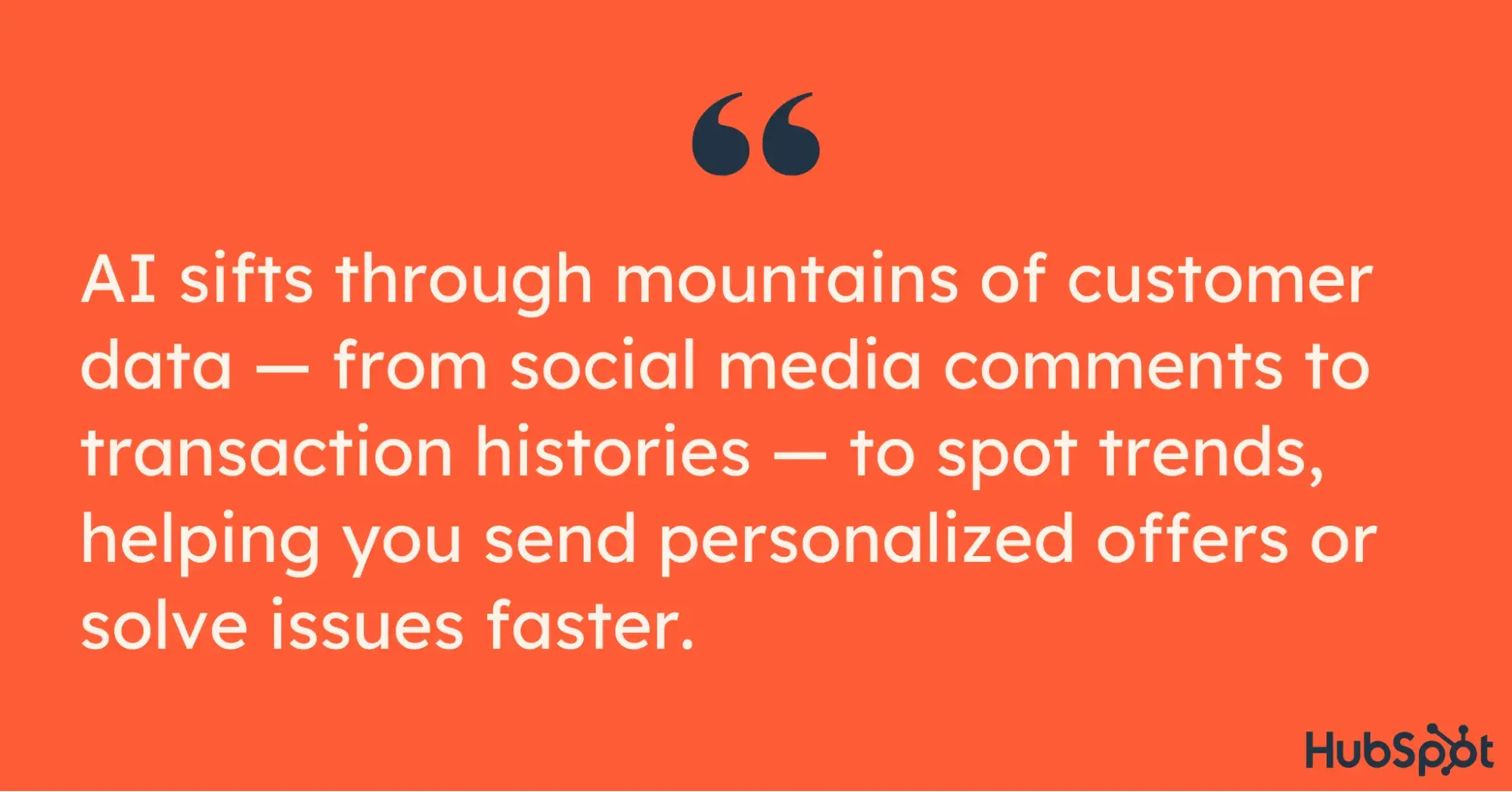
In the CX Pulse podcast, Robin Gareiss, CEO and Principal Analyst at research advisory firm, Metrigy, highlights how companies using conversational AI see major boosts in revenue, efficiency, and customer ratings. Simply because AI helps them solve issues faster and serve customers better.
“When we look at the overall value of AI, the metrics are incredibly compelling,” says Gareiss. “We ask companies, after implementing AI — particularly conversational AI — what impact it had on their business. Did revenue increase? Did costs go down? Did employee efficiency improve or customer ratings rise? In all of these areas, we've seen substantial improvements.”
When you have these insights, I’ve found you can use it in these ways:
- Send personalized product recommendations based on past behavior and preferences.
- Create tailored marketing campaigns and outreach that feel one-on-one at scale.
- Set up AI-powered chatbots for 24/7 personalized customer support.
- Implement churn prediction to identify at-risk customers and take preemptive action.
- Fix problems before they happen like detecting when a product’s popularity is dropping.
Find Out What Customers Are Feeling With Sentiment Analysis
Sentiment analysis figures out how customers feel about your product or service by analyzing their words and reactions.
In my experience, understanding customer sentiment helps you gauge satisfaction, identify pain points, and respond to issues before they escalate. It provides a pulse on how your product or service is perceived emotionally, beyond just feature functionality.
AI-powered NLP models can understand the nuances of human language, including context, sarcasm, and idiomatic expressions. This allows for more accurate sentiment classification beyond simple keyword matching.
For example, the phrase “This product is sick!” could be interpreted positively or negatively depending on context. AI can discern the intended meaning.
AI systems can analyze vast amounts of textual data from multiple sources in real-time. This enables companies to gather insights from:
- Social media posts.
- Customer reviews.
- Support tickets.
- Survey responses.
- Chat logs.
All simultaneously and continuously.
Plus, instead of just categorizing text as positive, negative, or neutral, AI can detect more nuanced emotions like frustration, excitement, confusion, or satisfaction.
AI models can be trained on company-specific data, improving accuracy for your particular product or industry terminology. They also learn and adapt over time and become more precise with each analysis.
Refine Knowledge Base With Post-Case Closure Insights
Ever wish you could automatically learn from every customer interaction? AI listens to every call, reads every chat, and then tells you exactly how to improve.
In the Deloitte AI360 podcast, Howie Stein, managing director and leading AI strategist, shares how they're using this technology:
“Post-case closure, after a case or after a conversation is complete, we're using generative AI to summarize call reasons, resolution steps, customer sentiment. Then we're using that information to refine the knowledge base, refine troubleshooting guides, and refine our predictive capability for future calls.”
What‘s happening here? AI is analyzing customer interactions after they’re over and picking out the important bits — why the customer called, how the problem was solved, and how the customer felt about it all.
Your customer service can then get better with every single interaction. You're learning how to solve issues faster and better next time.
Pro tip: Look for patterns in the AI's summaries. Use these insights to update your help guides, create targeted training sessions, and role-play real customer scenarios with your team.
With AI, you can turn every interaction into a learning opportunity and make your service better and better over time.
Synthesize and Analyze Customer Feedback at Scale
As companies grow, the volume of customer feedback can quickly become overwhelming. AI tools are proving invaluable in synthesizing this information and extracting actionable insights. Here's a real-world example of how Peter Luba at SmartPass, a digital hall pass company, uses AI to manage and analyze customer feedback:
“As we've grown, we've consistently been getting more and more pieces of feedback and insights from customers. We've been using a handful of tools to collect feedback from Intercom support chats, Gong recordings with prospects/customers, survey responses, our public-facing wishlist, G2 reviews, and more. The AI tools we've used help synthesize the feedback and highlight important spikes/trends in the product that we need to dive into.”
Automated analysis ensures all feedback is treated equally, reducing human bias. AI can also continuously analyze incoming feedback to provide up-to-date insights.
The company found that AI-powered analysis solved a critical problem with their previous manual approach.
“Prior to having a tool like this in place, we would manually tag customer feedback to feature requests. This worked for a while, but over time we just had too much feedback to manually log,” shares Luba. “Not only was this time-consuming, but after a few months, this feature-request log became out-dated and we never ended up using it.”
Perhaps most importantly, SmartPass’s experience reveals that AI-driven insights can directly inform product development and customer retention strategies:
“One way we've used this so far: We've recently had some customers churn. In just a few clicks, we received tactical, actionable, synthesized insights from direct feedback those customers have sent us over the past few years. With AI, we're able to quickly pick up on trends and figure out the highest impact changes we can make. We're using these insights to develop our product roadmap over the next few months.”
I like how AI feedback analysis helps companies quickly analyze thousands of customer reviews, identifying common pain points and emerging trends that traditional methods miss. Companies can develop better products, increase customer satisfaction, and improve overall business performance.
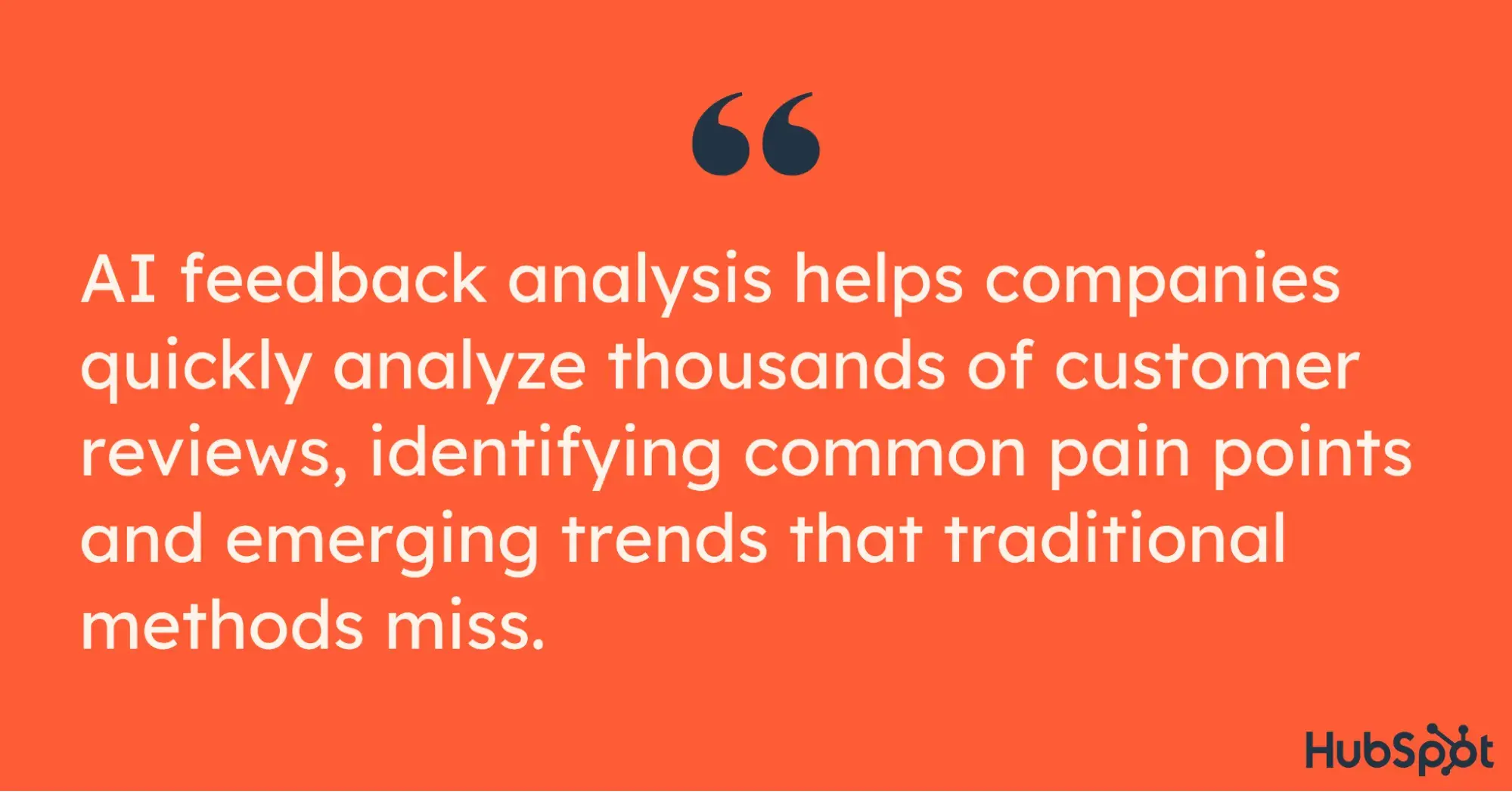
Improve Marketing Strategies
AI is changing marketing. We can now aim ads at exactly the right people and tweak them on the fly. It's way better than the old method of sending ads to everyone and hoping for the best.
One of the most exciting developments, in my opinion, is AI‘s ability to create dynamic content. Picture emails that update based on what you’re doing right now, or websites that show different info depending on what you like. Marketers used to dream about this stuff, but now AI makes it happen.
Stefan Chekanov, co-founder and CEO of Brosix — a secure instant messenger — shares a practical example of how AI enhances their marketing efforts:
“We use the AI capabilities of Google Analytics 4 (GA4) to give us insights into the data from our marketing efforts. GA4 uses machine learning models, which is quite useful when it comes to gaining perspective into useful user behavior. We find it helpful for detecting traffic patterns, so we can then identify new opportunities for improvement quickly. We can also get a picture of how our visitors interact with the website and improve our marketing strategy around that.”
This AI approach lets marketers understand exactly how users behave. It's not just about knowing where your visitors come from, but understanding how different segments interact with your content and where they drop off in the conversion funnel.
Chekanov elaborates on how this insight directly impacts their strategy, “For example, we know that the majority of our visitors come from organic traffic, so we decided to see how many of those visitors actually convert. What we did was analyze the flow of organic visitors using the funnel visualization tool, and we saw where drop-offs occurred and identified key pages that contributed most to conversions. Once we had that information, we knew that we had to double down on our organic efforts on those pages.”
With this info, marketers can spend their time and money smarter. They can focus on what really works and keep improving their plans based on what the AI tells them.
Create a Single Source of Truth for Customer Data
I started this journey thinking AI for customer insights was just about chatbots and basic data crunching. Boy, was I wrong. As we've seen, AI is changing how we understand and serve our customers in ways I never imagined.
But here‘s the real deal — AI’s best trick is bringing all customer info together in one place.
We‘re not just guessing anymore based on bits and pieces. AI pulls everything together — what customers say online, what they buy, their questions, how they use our website. It’s like seeing the whole picture of each customer, always up-to-date.
HubSpot's Director of Customer Support for EMEA, Noel O’Reilly, sums it up perfectly in this podcast: “Where it's really helping us right now is in the fluidity of our answers, in understanding our customers better, and what their particular queries might relate to on a personal level.”
This complete picture helps us make things just right for each customer, guess what they'll need next, and fix issues before they become problems.
Artificial Intelligence



